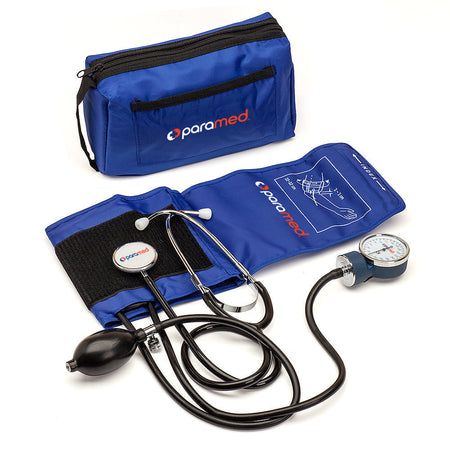How to accurately take your blood pressure at home
If you are wondering just how accurate home blood pressure monitors really are, the answer is very accurate: you just have to use them correctly. To go about the process, follow all the right guidelines, stick to the instructions, and ensure your monitors are always well-kept and away from the harm that could impede their ability to accurately measure your blood pressure.
Why it is important to check your blood pressure properly
Issues with blood pressure, such as hypertension, have been deemed silent killers that slowly creep up to wreak havoc on your health, possibly leading to a stroke.
And since just one measurement does not say much about your heart or health status, you need to consistently measure your blood pressure to promptly identify any alarming signs.
For this reason, you need to monitor regularly and properly, to obtain true readings that accurately reflect your health. This way, you can take action when it is truly needed, which can be lifesaving and life-altering.

What are the symptoms of blood pressure problems?
The blood pressure readings should help you identify any irregular heart rate or a too-high or too-low rate. However, they should also be coupled with observing your own symptoms to accurately understand your condition and know what to look for. All of this information can aid in identifying when you are having a health crisis that needs to be checked out by a professional.
Remember that a normal blood pressure reading should be around 120/80.
Hypertension symptoms
The blood pressure readings that indicate hypertension are above 130 for systolic and above 80 for diastolic.
Anything above 180/120 indicates a hypertensive crisis and needs immediate intervention by a healthcare professional!
The general signs of hypertension to look out for include shortness of breath, lightheadedness, blurry vision, headaches, chest pains, and even nosebleeds.
Low blood pressure
The blood pressure readings that indicate hypotension are under 120 for systolic and under 80 for diastolic.
Interestingly, the symptoms of hypotension are partly similar to those of hypertension, including feeling lightheaded, fatigued, confused, nauseated, cold, dehydrated, dizzy, and you may even faint.
How to prepare for blood pressure taking
Many factors come into play that can affect the accuracy of a blood pressure reading. The correct way of taking blood pressure entails that you follow these guidelines prior to beginning:
-
Smoking and caffeine are a no-no
Do not smoke or drink caffeine/alcohol for at least 30 minutes prior to taking the reading -
Bathing and exercise are also to be avoided
Do not take a bath immediately before the reading, and do not engage in strenuous activity. -
Relax and sit up straight
Attempt your best to relax for up to five to ten minutes leading up to the reading. It helps to discover your own ways to relax before taking blood pressure readings. And while the test is taking place, relax, sit up straight with your feet on the ground, breathe regularly, and avoid talking, eating, drinking, or moving.

Guide to checking your blood pressure manually
When people ask how to take a manual blood pressure reading, they assume it is far more difficult than it really is. But the steps are simple, and they are:
1. The cuff goes on first
Firstly, wrap the cuff around your arm, nearly an inch above the elbow joint. The cuff should be touching your skin, not your clothes, and the wire should run across the middle of your arm.
2. The stethoscope goes in next
Secondly, the stethoscope bell needs to be tucked under the cuff. The exact location is the front of the cuff where the wire is running.
3. Begin the test with pumps
Once you make sure that everything is ready and the person getting their blood pressure measured is following the guidelines of how to sit and so on, begin by pumping air into the cuff.
4. Start listening
When the reading is 30 mmHg above the average reading, stop pumping air, begin listening intently through the stethoscope, and release some air through the valve.
5. Read the results
The reading on the manometer when you happen to hear the first heartbeat is your systolic reading. Keep releasing air through the valve while listening. The reading on the manometer when you happen to hear the last heartbeat is your diastolic reading. With that, you have completed the test, and you now know the results.
How to use a digital monitor
Before you begin, have you ever asked yourself which arm is the best to take blood pressure readings? The answer is NOT your dominant hand. If you are right-handed, test on your left hand, and vice versa.
The following are tips on how to take blood pressure measurements using an automatic device:
1. Ready yourselfGet yourself comfortable and ready to take the test. Follow the guidelines on how to properly prepare for the test, and turn on your device.
2. Put on the cuffMake sure you have the right cuff size. Once you do, wrap it on your arm, an inch above your elbow, with the wire hanging through the middle of your arm. The device can even inform you if your cuff is on correctly or not.
3. Begin the testWith your hand resting on a flat surface at chest level, simply press begin, sit back, and relax while the test is being conducted.
4. Read the resultsOnce the test is over, your device can read the results out for you, or you can easily read the numbers on the screen. Look for any indications of an irregular heartbeat or other signs that could raise alarms.
How to understand the blood pressure readings
The systolic number, also known as the “bigger number”, the “upper number”, or the “first number” (when measured using a manual sphygmomanometer), is how powerful the pressure is between the blood that the heart is pumping and the walls of the arteries DURING the beats.
The diastolic number, also known as the “lower number”, the “bottom number”, or the “second number” (when measured using a manual sphygmomanometer), is how powerful the pressure is between the blood that the heart is pumping and the walls of the arteries in between the beats.
When to see a doctor
We recommend that you keep track of your daily results so that you and your doctor can understand your average readings and patterns and identify anything that needs addressing.
You need to consult your doctor immediately if your readings are very high or very low and you are experiencing symptoms of hyper or hypotension. You should also consult your doctor if you have consistently gotten higher or lower-than-average readings for a few days.
How to balance your blood pressure day by day
Firstly, to additionally answer the question of how often one should take blood pressure readings, it is ideally daily. If you find that you are struggling with keeping your blood pressure within the normal range, attempt the following tips:
Try your best to reduce stress in your surroundings, engage in generally healthier lifestyle activities such as following a healthy diet, avoiding smoking and alcohol, getting some form of sports/exercise done every day, and so on.
Good sleep, less salt, and losing some weight (if necessary) can also help keep your blood pressure under control.
Takeaway message
With problems related to blood pressure being far more dangerous than what is commonly known and becoming more common, it is necessary to take blood pressure measurements daily. This helps keep your health in check and understand what needs to be done and when.
And with the newly found knowledge you have probably just acquired, you are now fully armed with the information you need to begin this journey.



